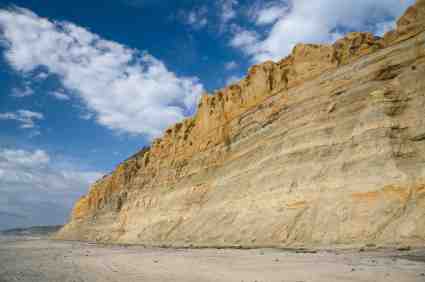
best camping place sweden image

J
I want to travel across Europe or the pacific islands and volunteer In exchange for living and possibly explore different places. I'm hoping to maybe even make a little money to do touristy things as well. I'm a student in the US.
Answer
It's illegal for you to work in Europe without first obtaining a visa that allows you to live and work there unless you are a European citizen. Work visas are applicable only to a single country and not to the whole of Europe. If you were a Canadian citizen, you could get a working vacation visa which would allow you to live in a country and do limited work, but those are for a stay of more than 90 days in a single country.
Right now, the overall unemployment rate in Italy is around 12% and it's around 37% for young people. In Spain and Greece, the unemployment rate is 27% overall and much higher for young people. In Portugal, the unemployment rate is 18% and France is seeing record high numbers of unemployed people. In the UK, the unemployment rate is 7.8%, but at least the number of jobless fell in June. Sweden is a lkittle higher. The lowest unemployment rates are in Germany, Austria, Denmark and Norway. The possibility of getting a job even if you had a visa are currently poor.
You're better off saving up for your trip and planning on getting around on that. Prices depend on exactly where you're starting from, when you go (prices vary a lot), how long you stay, where you go in Europe, how you get around, the kind of places you stay in and what you see/do/eat. People who backpack generally can get by for $100 per day staying in cheap hostels and carefully watching their budget (not including airfare). However, if you stay in hotels, it will cost you more. I usually spend 100 to 150 euro a night for a hotel just for myself, but there are cheaper places.
Here are some resources that can help you plan and check options and current prices for your trip (expect prices in the future to rise):
http://www.kayak.com/ - airfares & hotels; the explore function is useful for finding the less expensive places to fly into from your starting point.
http://www.skyscanner.it/ - particularly good for budget flights within Europe, but you can also use everywhere as a destination to do something like the explore option on Kayak. You may not need the airfares, but you can compare to the cost of the trains to get around. this one may be more useful for you.
http://www.seat61.com/ - a great train site with details about railpasses. It can be cheaper to buy individual tickets than passes. This site will tell you how to determine whether you're better off with a railpass or individual tickets or some combination for your trip. It also details how to use the pass and what to avoid to get the best use out of a pass. Most high speed, international and night trains require reservations and will require you to pay a supplement when you use a railpass. You need to be aware that a railpass is almost always more expensive for trains here in some places like Italy and Spain.
http://www.trenitalia.com/cms/v/index.js⦠- Italian train schedules & prices. You can find links to the various national train sites on the Man in Seat 61 site above.
http://www.venere.com/ - hotels/B&Bs - prices for the same hotel can vary hugely depending on the season and what local events are going on.
http://www.hostelbookers.com/ - hostels.
http://www.monasterystays.com/ - monasteries & convents that offer accommodations
You can also look into camping or couch surfing as cheaper alternatives for accommodations.
http://www.whatsonwhen.com/sisp/index.ht⦠- festivals, exhibitions and events
http://www.backpackeurope.com/ - information & advice
For sightseeing prices: check the websites for entrance fees for the museums & galleries you're interested in. I spend anywhere between nothing and 40 euro a day depending on exactly what I go to see when out exploring. For food, I spend around 25 to 50 euro for a meal, but you can eat for less. A pizza is 8 to 13 euro and a panino or wrap is around 3 to 6.50 euro in many places. You can often get food at festivals at a relatively low price. You can also shop in the markets and put some meals together for yourselves.When I travel, I like to try the local specialties and the good restaurants.
It's illegal for you to work in Europe without first obtaining a visa that allows you to live and work there unless you are a European citizen. Work visas are applicable only to a single country and not to the whole of Europe. If you were a Canadian citizen, you could get a working vacation visa which would allow you to live in a country and do limited work, but those are for a stay of more than 90 days in a single country.
Right now, the overall unemployment rate in Italy is around 12% and it's around 37% for young people. In Spain and Greece, the unemployment rate is 27% overall and much higher for young people. In Portugal, the unemployment rate is 18% and France is seeing record high numbers of unemployed people. In the UK, the unemployment rate is 7.8%, but at least the number of jobless fell in June. Sweden is a lkittle higher. The lowest unemployment rates are in Germany, Austria, Denmark and Norway. The possibility of getting a job even if you had a visa are currently poor.
You're better off saving up for your trip and planning on getting around on that. Prices depend on exactly where you're starting from, when you go (prices vary a lot), how long you stay, where you go in Europe, how you get around, the kind of places you stay in and what you see/do/eat. People who backpack generally can get by for $100 per day staying in cheap hostels and carefully watching their budget (not including airfare). However, if you stay in hotels, it will cost you more. I usually spend 100 to 150 euro a night for a hotel just for myself, but there are cheaper places.
Here are some resources that can help you plan and check options and current prices for your trip (expect prices in the future to rise):
http://www.kayak.com/ - airfares & hotels; the explore function is useful for finding the less expensive places to fly into from your starting point.
http://www.skyscanner.it/ - particularly good for budget flights within Europe, but you can also use everywhere as a destination to do something like the explore option on Kayak. You may not need the airfares, but you can compare to the cost of the trains to get around. this one may be more useful for you.
http://www.seat61.com/ - a great train site with details about railpasses. It can be cheaper to buy individual tickets than passes. This site will tell you how to determine whether you're better off with a railpass or individual tickets or some combination for your trip. It also details how to use the pass and what to avoid to get the best use out of a pass. Most high speed, international and night trains require reservations and will require you to pay a supplement when you use a railpass. You need to be aware that a railpass is almost always more expensive for trains here in some places like Italy and Spain.
http://www.trenitalia.com/cms/v/index.js⦠- Italian train schedules & prices. You can find links to the various national train sites on the Man in Seat 61 site above.
http://www.venere.com/ - hotels/B&Bs - prices for the same hotel can vary hugely depending on the season and what local events are going on.
http://www.hostelbookers.com/ - hostels.
http://www.monasterystays.com/ - monasteries & convents that offer accommodations
You can also look into camping or couch surfing as cheaper alternatives for accommodations.
http://www.whatsonwhen.com/sisp/index.ht⦠- festivals, exhibitions and events
http://www.backpackeurope.com/ - information & advice
For sightseeing prices: check the websites for entrance fees for the museums & galleries you're interested in. I spend anywhere between nothing and 40 euro a day depending on exactly what I go to see when out exploring. For food, I spend around 25 to 50 euro for a meal, but you can eat for less. A pizza is 8 to 13 euro and a panino or wrap is around 3 to 6.50 euro in many places. You can often get food at festivals at a relatively low price. You can also shop in the markets and put some meals together for yourselves.When I travel, I like to try the local specialties and the good restaurants.
best places for wild camping in sweden?

Hi. I am planning a wild camping to beautiful sweden in the summer and am looking for any advice on the best places and any festivals or anything that would be good to take in. The time im going isnt decided yet. It will porb be the middle of summer.
Answer
My favourite is the northern part of Kungsleden (the king's way) in Lappland. The route from Abisko - Kebnekaise (highest mountain in Sweden) - Nikkaluokta - Kiruna.
It has a wonderful landscape, many stations on the way where you can buy food and other stuff (so you don't have to carry so much) and can be done in a week (including some days off to enjoy the nature).
I recommend the way over Unna Allakasstugorna. There not as many people go as the other way directly to Alesjaurestugan.
You can also head for Narvik from there.
Unfortunately it's also the most walked part of Kungsleden, so you will meet many people there (for walking in nature). But it's also interesting, as they come from all over the world.
Best maps are the 'Gröna Kartan' (1:50.000)
Start and finishing point can be very easily reached by train from Stockholm or Göteborg.
My favourite is the northern part of Kungsleden (the king's way) in Lappland. The route from Abisko - Kebnekaise (highest mountain in Sweden) - Nikkaluokta - Kiruna.
It has a wonderful landscape, many stations on the way where you can buy food and other stuff (so you don't have to carry so much) and can be done in a week (including some days off to enjoy the nature).
I recommend the way over Unna Allakasstugorna. There not as many people go as the other way directly to Alesjaurestugan.
You can also head for Narvik from there.
Unfortunately it's also the most walked part of Kungsleden, so you will meet many people there (for walking in nature). But it's also interesting, as they come from all over the world.
Best maps are the 'Gröna Kartan' (1:50.000)
Start and finishing point can be very easily reached by train from Stockholm or Göteborg.
Powered by Yahoo! Answers


























